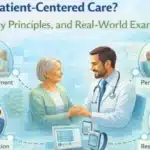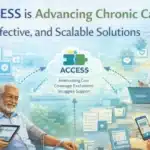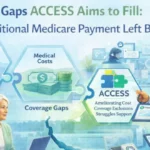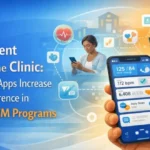Improving Care Coordination with Remote Patient Monitoring (RPM)
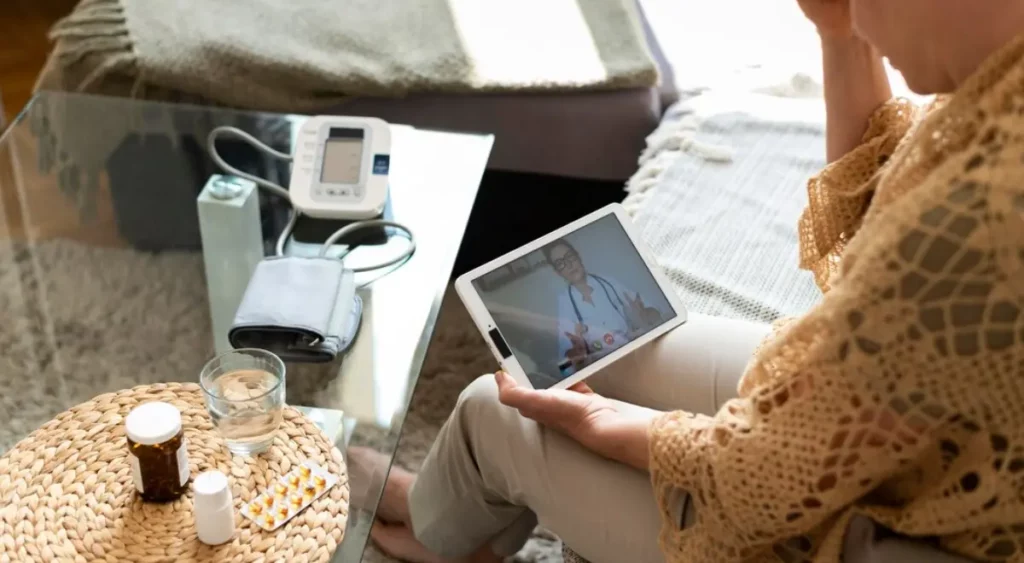
Care coordination plays a significant role in providing high-quality care to patients with chronic illnesses. To guarantee that patients’ care needs are satisfied and that they receive safe and efficient treatment, healthcare practitioners must cooperate and communicate with one another.
If sufficient coordination is not provided, patients may experience confusion, prescription errors, and possibly negative health outcomes. Remote Patient Monitoring (RPM) technology has transformed care coordination by enabling healthcare professionals to effortlessly bridge the communication gap between caregivers and remotely monitor patients’ health.
This blog examines the value of care coordination in improving patient outcomes and how RPM supports it.
Table of Contents
ToggleWhat is Care Coordination?
The process by which healthcare professionals collaborate to exchange information and provide patients with high-quality care is known as care coordination. Care coordination assists patients by making sure their needs are communicated to all individuals involved in their care, right from the caregivers to physicians, nurses, and therapists, ensuring safe and quality treatment.
Efficient care coordination is essential in the healthcare industry for a number of reasons, including:
- In the United States, primary, emergency, and specialist care facilities are fragmented and follow different procedures.
- The efficiency of care is impacted by these different procedures and information lists that referral staff must go through.
- Primary care doctors are rarely informed of the events that transpired during a referral or emergency visit, and specialists might not be given clear explanations for the patient’s referral or details about tests that have already been performed.
- Many times, patients remain confused due to the reasons behind their primary care referral to a specialist, the scheduling process, and what to do following their consultation.
In order to avoid scenarios when treatment plans and therapies recommended by several healthcare providers may conflict with one another and perhaps result in negative health outcomes, following care coordination is crucial.
Ineffective or partial communication between physicians increases the likelihood of medical or treatment errors, potentially causing patients to undergo unnecessary repeated testing. Complications are more likely seen in patients who have multiple illnesses or severe medical issues.
Best Practices for Care Coordination
The growing use of Electronic Health Records (EHRs) has made care coordination much simpler. Providers can view and update a patient’s medical history easily using an online portal. When treating patients with certain illnesses or in a particular geographic area, physicians can facilitate coordination and communication by joining an Accountable Care Organization (ACO).
Not only this, healthcare providers can also benefit from care coordination supporting programs or models, such as the CMS Innovation Center, and Medicare Shared Savings Program.
These best practices for care coordination guarantee that healthcare professionals can collaborate and deliver the right care and treatment to chronically ill patients.
How Remote Patient Monitoring Help in Care Coordination?
Remote patient monitoring is a modern technology innovation that is playing a significant role in enhancing care coordination. In recent years, RPM has become more and more popular as an alternative to in-clinic patient care in a wide range of care settings.
Through the use of remote monitoring devices available in the patient’s home, RPM provides healthcare professionals with vital information required to assess the patient’s condition. These professionals can effortlessly communicate with patients and one another while reviewing patients’ vital signs and identifying symptoms remotely.
This collaboration helps create a care coordination plan that leads to improved patient outcomes. Let’s examine how some of RPM’s primary features, such as virtual communication tools, education, medication management, and remote vitals monitoring help in improving care coordination.
- Remote Vitals Monitoring : In order to remotely record and monitor patients’ vitals, RPM makes use of technology devices such as heart rate monitors, glucose monitors, blood pressure monitors, pulse oximeters, and other medical devices. Additionally, patients are able to self-monitor and respond to inquiries regarding their everyday health. Healthcare providers then exchange this data, which may help them make decisions about the treatment plan and care delivery model.
The continuous monitoring that RPM offers allows caregivers to customize treatment strategies for patients requiring continuous care, such as those with diabetes, heart disease, or hypertension. In the event of a high-risk situation, it alerts and notifies providers so they can take immediate action and make necessary modifications to the treatment plan.
- Virtual Communication Tools: In order to deliver efficient care coordination, healthcare providers can stay in touch with patients and each other through virtual communication tools. Healthcare providers can check-in on their patients remotely via virtual appointments. Patients can communicate with care staff using text messaging in addition to phone calls or video chats.
Healthcare professionals can inquire about patients’ symptoms, and make decisions by evaluating their health vitals.
- Education and Medication Management: RPM enables patients to participate more actively in their treatment. Improving patients’ health literacy enables them to make educated decisions, interact with healthcare providers more effectively, manage their symptoms and medication adherence, and much more.
Struggling with fragmented care delivery?
Discover how Remote Patient Monitoring (RPM) can streamline care coordination by keeping providers, patients, and caregivers aligned. This blog breaks down how real-time data, integrated workflows, and smarter communication through RPM lead to faster interventions, reduced errors, and improved health outcomes. Explore how HealthArc’s RPM platform brings clarity and connection to every step of the care journey.
How HealthArc Can Help You with Care Coordination
A key component of providing patients with quality care is care coordination. Healthcare professionals can use RPM to develop individualized treatment plans by utilizing remote vitals monitoring, virtual communication tools, education, and medication management. All these developments are improving care coordination and making it much more effective.
HealthArc’s clinical expertise provides care coordination services empowering clinicians to accelerate better health decisions that lead to a higher quality of care.
From on-demand urgent care to support for chronic and complex health challenges, we’re changing the way clinicians and patients access remote healthcare, from the comfort of their homes. Our connected devices and personalized, timely, actionable outreach help patients achieve lasting behavioral change improving how they manage chronic conditions, such as diabetes and hypertension, to enhancing their wellness and prevention.
By working with patients and clinicians across the healthcare ecosystem, we’re creating an easy, accessible, in-person, and/or virtual-first experience at multiple touchpoints and delivering better outcomes.
Please request a free demo to learn about how HealthArc’s care coordination platform can help your organization achieve its healthcare goals.
Frequently Asked Questions (FAQs)
Care coordination refers to an organized way of managing a patient’s healthcare with various providers. This minimizes unnecessary duplicative services and avoids medical errors, guaranteeing that the patient receives the right type of care at the right time. Improved care coordination leads to better outcomes besides enhancing patient satisfaction and reducing the cost of healthcare.
Remote Patient Monitoring (RPM) helps coordinate care and enables healthcare providers to monitor chronic conditions and notice early warning signs in terms of making timely interventions.
Certainly, RPM can help in reducing the rates of hospital readmission. With RPM, tracking patient health data post-discharge allows providers to detect health complications at the earliest. This proactive approach ensures conditions can be managed before deteriorating, with fewer ER visits and readmissions.
Some examples of care coordination tools include:
- Electronic Health Records (EHRs): These are platforms used to store and share information about patients centrally.
- Remote Patient Monitoring (RPM) systems: These are devices and apps that monitor health data in real time.
- Care management software: This is the software used for scheduling, tracking, and following up on care plans.
- Secure messaging tools: These systems allow for safe communication among providers and patients.
Want to improve communication between your care teams and patients? Explore HealthArc’s RPM platform for coordinated care delivery.
Most Recent Blogs
Categories
Related Blog
- November 26, 2025 | Read Time: 14 mins
Return on Investment (ROI) of Remote Patient Monitoring (RPM): A Complete Guide for ACOs and Healthcare Organizations
The U.S. healthcare system continues its transition from fee-for-service models to value-based...
Learn More- November 24, 2025 | Read Time: 15 mins
Common RPM Pricing Models for Providers: A Profitability-Focused Guide
Remote Patient Monitoring (RPM) has rapidly emerged as one of the leading...
Learn More- October 23, 2025 | Read Time: 12 mins
How RPM Devices Improve Hypertension and Diabetes Outcomes in Medicare Populations
Remote patient monitoring (RPM) is transforming chronic care for Medicare beneficiaries. CMS...
Learn More